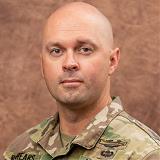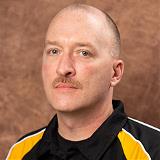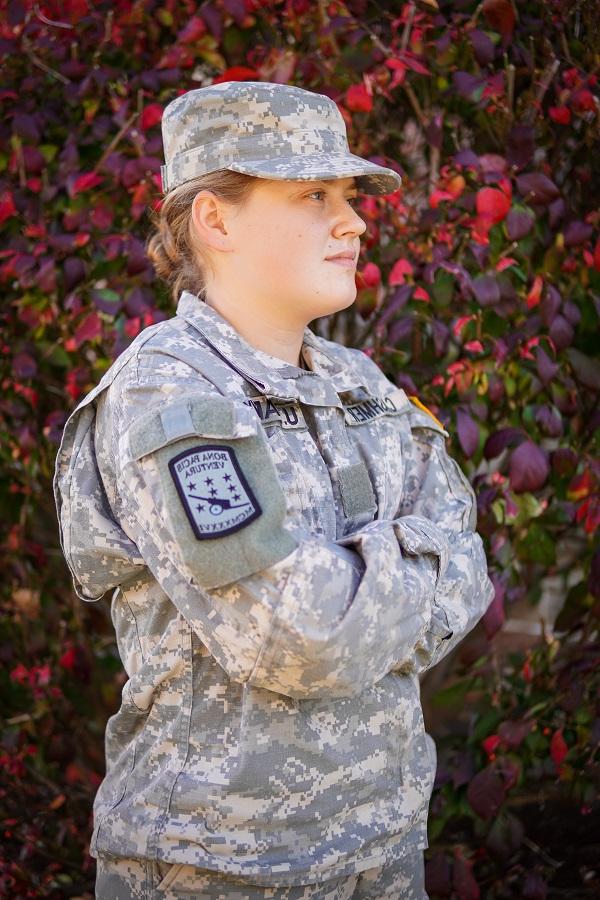ROTC
The Seneca Battalion
For over 100 years, Alfred University has been involved in training bright young students to become effective officers in the United States Army. Students from the University have gone on to serve in every conflict that the United Sates has been involved in from the Civil War to the Global War on Terrorism, creating over 500 military alumni.
By choosing to come to AU, you are choosing a unique path; one in which you will be exposed to diversity, inclusivity and social justice. You are becoming a leader in an environment that thrives on providing opportunities to be a facilitator of positive social change. The Army ROTC program at Alfred University is part of the Seneca Battalion headquartered at nearby St. Bonaventure University.
Army ROTC is an elective curriculum you take along with your required college classes. It gives you the tools, training and experiences that will help you succeed in any competitive environment giving you an edge over your peers. Since Army ROTC is an elective, you can participate in your first or second year of college without any obligation to join the Army. You can have a traditional college student experience while also studying and training to be an officer.
Students who take courses in military science for at least two years and choose to contract during their time at the University will be commissioned as a 2nd Lieutenant in the United States Army upon graduation. Following commencement, graduates will have the unique opportunity to lead soldiers in many capacities serving our country as a commissioned officer in the Active Army, Army National Guard or Army Reserves.
There are several ROTC scholarships that a can be awarded to students who decide to make this commitment. Most importantly, you have to want to be a leader. ROTC can train and teach you how to be the best you can be; however, only you can provide the motivation to become an officer.
ROTC cadets are not like any other college student. They are full time students who belong to sports, clubs, and other organizations on campus, while managing their time as a cadet. When not wearing the uniform they could be a resident assistant, involved in student senate, running down a field, or starting a new club.
When the students are in uniform they transform into cadets who hold a high standard on professionalism, integrity, and respect. As a cadet progresses through the ROTC program, their responsibilities become greater and greater. They take a series of classes that build on the knowledge of today’s Army Officer. Classes are one hour a week where the cadets learn leadership and Army policy. Another hour of the week is spent in lab. Lab is the chance for the cadet to apply what is learned in the classroom to real life. During lab the cadets practice ceremonial drill, field tactics, physical fitness, land navigation, and more. As the cadet rises through the ranks they use the leadership concepts learned to successfully lead the newer cadets. As seniors, they will develop training plans for Lab and start being in the role of an officer with the help of instructors and their fellow peers.
In 1917, Alfred University took part in the Student Army Training Corps (SATC), which was formed as a precursor to what is now ROTC. The SATC had 140 cadets its first year, doubling to 300 cadets its second year. The cadets lived on campus and followed military rules and regulation, but there was no major commitment after college.
In 1943, the University took part in the Army Specialized Training Program (ASTP) until the end of World War II. The program was set up in order to speed up the time needed to train officers in the Army. By doing the basic components on campus, it provided less training needed when going into military service.
Alfred University began its on-campus ROTC program in 1952, making it compulsory for all physically capable male students in 1956. The University dropped the mandatory component in 1969 and women were allowed to participate starting in 1973. The program thrived for many years, with an average of 200 cadets each year, until enrollment began to decrease in the 1970s.
When the Army closed the program in 1976, the University started a partnership with nearby St. Bonaventure University. Since that time, all Alfred University students take ROTC through St. Bonaventure's program, commissioning as an officer upon graduation from Alfred University.
What is Reserve Officers' Training Corps. (ROTC)?
ROTC, short for Reserve Officers' Training Corps., is a program of study leading to a presidential appointment as a second lieutenant in the United States Armed Forces.
What is Military Science?
Military Science is the name of the academic department that provides ROTC instruction at the University. The program includes a specified sequence of leadership, management, and professional knowledge classes as well as hands on leadership experience but is not a major or minor at the university.
What can ROTC do for me?
ROTC can provide leadership and management experiences, which will add more value to your resume. It provides you with training and values that employers seek out in applicants. It provides numerous opportunities for generous scholarships and academic credit toward graduation.
How much money will I make as a cadet?
Contracted cadets earn a tax-free monthly stipend for up to 10 months each year (first year students $300, sophomores $350, juniors $450, and seniors $500).
What does a scholarship pay for?
ROTC scholarships at Alfred University are earned through St. Bonaventure’s ROTC program. They pay full tuition and mandatory fees. This is in addition to the monthly stipend listed above and a $1,200 annual book allowance. New York state, students receiving full tuition ROTC scholarships are not eligible for NYS TAP per NYS regulations. A student can earn a 4,3, or 2 year scholarship.
Do I have to go into the army after college?
There is no requirement to serve until you sign a contract in your third or fourth year. Upon signing a contract you make an obligation to serve as an Army officer. You can serve Active Army, Army Reserves, or Army National Guard.
What's the difference between "officer" and "enlisted?"
Officers lead soldiers and are the managers, problem solvers, key influencers and planners who lead while Enlisted lead, follow, and execute orders by their officers. Together they contribute the knowledge and experience needed to lead soldiers.
How much time does ROTC take per week for contracted cadets?
3-4 hours per week outside of your military science class and lab.
Do I get college credit for Military Science classes?
Yes. Some classes can be selected to count as electives towards Alfred University’s Leadership minor and the Lab portion will fulfill any Physical Health and Wellness requirement.

Beshears, Jeffery P.
Sergeant First Class, U.S. Army
Military Science Instructor
Office Phone: 716-375-2566
Send an email
-web.tmb-.jpg?sfvrsn=9aa3c5d5_2)
Luckie, John E.
Lieutenant Colonel, United States Army
Chair and Professor, Department of Military Science
Office phone; 716-375-2565
Send an email
 Manning, Brandon M.
Manning, Brandon M.
Master Sergeant, U.S. Army
Senior Military Science Instructor
Campus Phone: 716-375-2508
Send an email

Walton, James M.
Department of the Army Civilian and First Sergeant, U.S. Army (Retired)
Human Resources Technician
Phone: 716-375-2508
Send an Email
Courses taught in the ROTC program are both classroom and lab based.
- MS-101 Foundations of Officership
- MS-102 Basic Leadership
- MS-201 Individual Leaderships Studies
- MS-202 Leadership & Teamwork
- MS-301 Leadership/Problem Solving
- MS-302 Leadership and Ethics
- MS-401 Leadership & Management
- MS-402 Officership
- MS-499 Independent Study - Military Science


